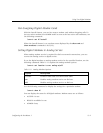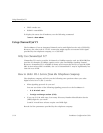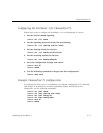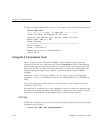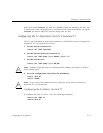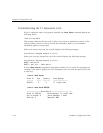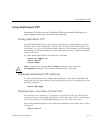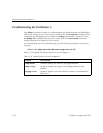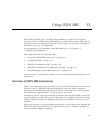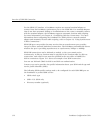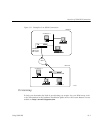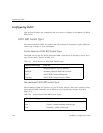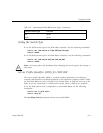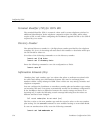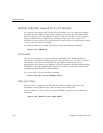
12-1
Using ISDN BRI
12
This chapter describes how to configure the PortMaster to connect two local area
networks (LANs) via ISDN using V.25bis dialing on a Basic Rate Interface (BRI) with an
integrated network termination device (NT1). This chapter also provides an example to
demonstrate this type of configuration.
For information on the PortMaster 3 and ISDN PRI service, see Chapter 11,
“Configuring the PortMaster 3.”
This chapter discusses the following topics:
• “Overview of ISDN BRI Connections” on page 12-1
• “Configuring ISDN” on page 12-4
• “ISDN Port Configuration Tips” on page 12-9
• “ISDN BRI Unnumbered IP Configuration Example” on page 12-9
• “Troubleshooting an ISDN BRI Connection” on page 12-21
See the
PortMaster Command Line Reference
for more detailed command descriptions and
instructions.
Overview of ISDN BRI Connections
ISDN is most commonly used to provide low-cost connectivity between sites that cannot
justify the cost of a dedicated high-speed leased line. However, ISDN connections
provide more bandwidth than asynchronous dial-up connections can, as well as quicker
call completion—approximately 1 second instead of 45 seconds.
PortMaster products support manual dial-on-demand and automatic ISDN connections
using the BRI port and the PPP protocol. BRI supports two 64Kbps B channels for data
and one 16Kbps D channel for signaling. ISDN ports are available as either a U or S/T
interface.
ISDN ports are easier to configure than asynchronous or synchronous ports. Because the
ISDN U interface has the NT1 device integrated in the port, no modem, CSU/DSU, or
external terminal adapter is required.



